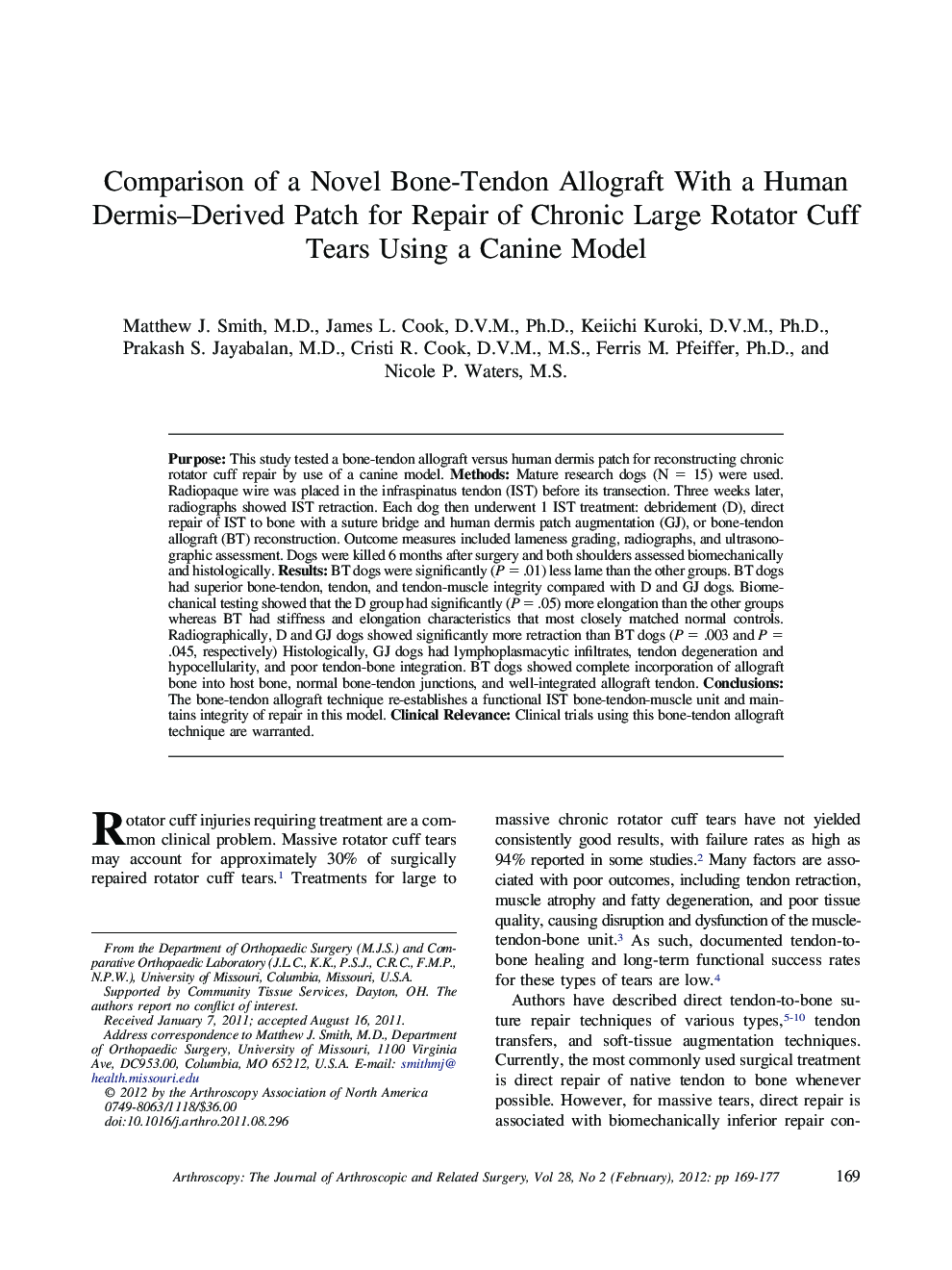| Article ID | Journal | Published Year | Pages | File Type |
|---|---|---|---|---|
| 4044985 | Arthroscopy: The Journal of Arthroscopic & Related Surgery | 2012 | 9 Pages |
PurposeThis study tested a bone-tendon allograft versus human dermis patch for reconstructing chronic rotator cuff repair by use of a canine model.MethodsMature research dogs (N = 15) were used. Radiopaque wire was placed in the infraspinatus tendon (IST) before its transection. Three weeks later, radiographs showed IST retraction. Each dog then underwent 1 IST treatment: debridement (D), direct repair of IST to bone with a suture bridge and human dermis patch augmentation (GJ), or bone-tendon allograft (BT) reconstruction. Outcome measures included lameness grading, radiographs, and ultrasonographic assessment. Dogs were killed 6 months after surgery and both shoulders assessed biomechanically and histologically.ResultsBT dogs were significantly (P = .01) less lame than the other groups. BT dogs had superior bone-tendon, tendon, and tendon-muscle integrity compared with D and GJ dogs. Biomechanical testing showed that the D group had significantly (P = .05) more elongation than the other groups whereas BT had stiffness and elongation characteristics that most closely matched normal controls. Radiographically, D and GJ dogs showed significantly more retraction than BT dogs (P = .003 and P = .045, respectively) Histologically, GJ dogs had lymphoplasmacytic infiltrates, tendon degeneration and hypocellularity, and poor tendon-bone integration. BT dogs showed complete incorporation of allograft bone into host bone, normal bone-tendon junctions, and well-integrated allograft tendon.ConclusionsThe bone-tendon allograft technique re-establishes a functional IST bone-tendon-muscle unit and maintains integrity of repair in this model.Clinical RelevanceClinical trials using this bone-tendon allograft technique are warranted.
